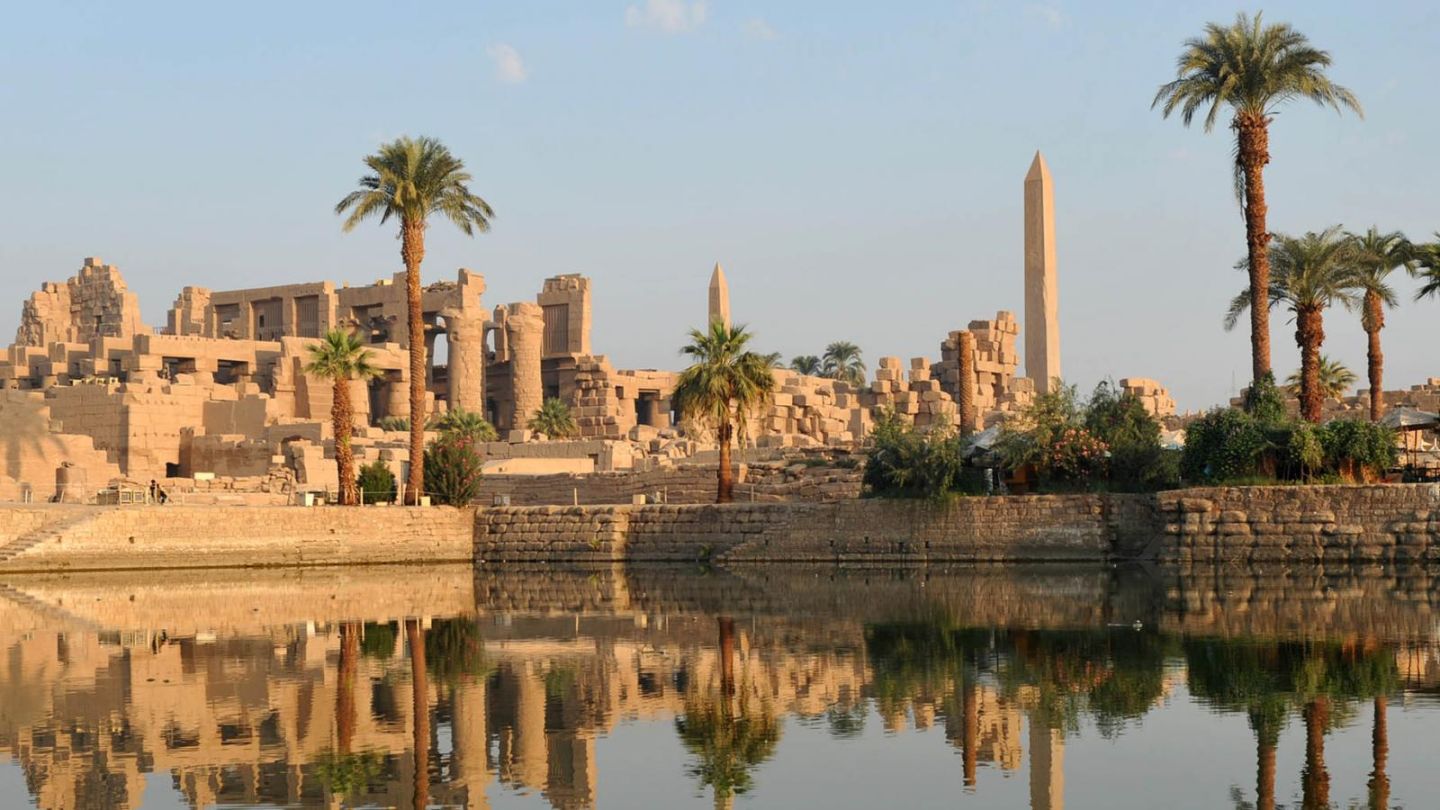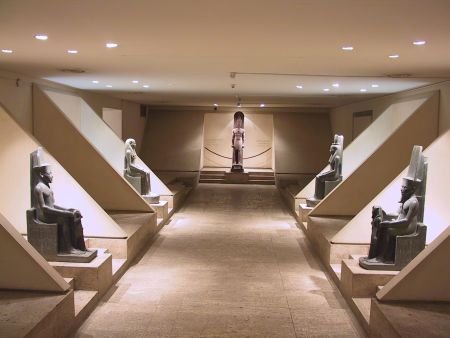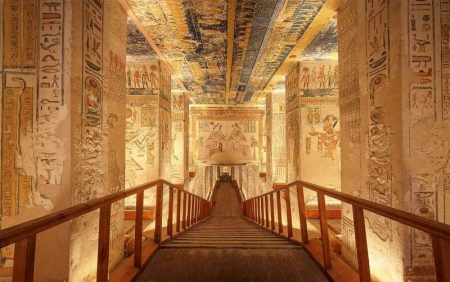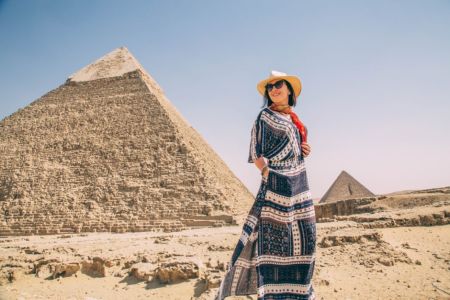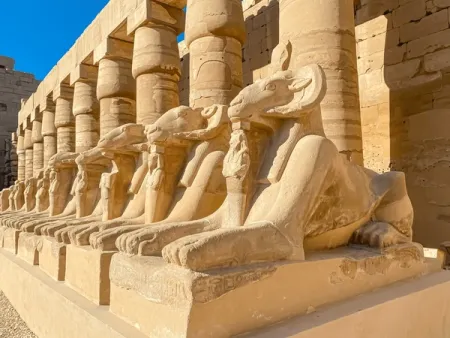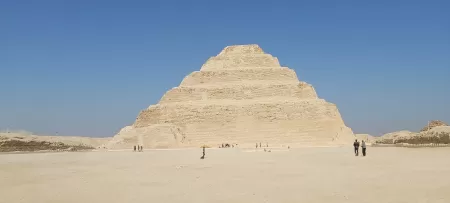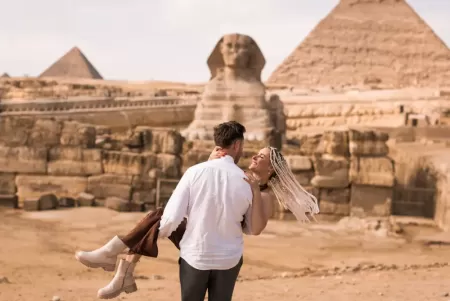Explore Egypt in 5 days! Visit Cairo, Luxor, and Aswan, including the Pyramids, Sphinx, Egyptian Museum, Luxor & Karnak Temples, Valley of the Kings, and Abu Simbel.
Entering Luxor is to enter a living museum—the history of each wall, each statue, and each temple is told over thousands of years. Luxor, which lies by the side of the Nile, is one of the most historical places in Egypt and has some of the most spectacular ancient buildings. Luxor in a day, or a full itinerary that goes, offering a city of discovery, spirituality, and pure wonder that is perfectly balanced.
Karnak Temple
The visit to the magnificent Karnak Temple Complex is a must for every day tour in Luxor. The temple site, which covers more than 200 acres, was the place where Amun-Ra was worshipped, and its Great Hypostyle Hall with its 134 enormous columns stands as one of the most awe-inspiring wonders of Egypt's architecture. The temple walls not only speak about the gods and the power of the divine but also tell the tales of kings and their alignment with the gods through rituals.
Visiting Karnak Temple during your Luxor sightseeing tours offers a real glimpse into the glory of Thebes—the spiritual heart of ancient Egypt.
Luxor Temple
In contrast to Karnak, Luxor Temple is dedicated to the rejuvenation of kingship rather than a specific deity. Built by Amenhotep III and Ramses II, it connects to Karnak via the Avenue of Sphinxes. What makes this temple special is its location right in the heart of modern Luxor, symbolizing the bridge between the ancient and the contemporary.
The Valley of the Kings
The Valley of the Kings, the burial place of the Egyptian New Kingdom pharaohs, is located among the Theban hills on the West Bank of Luxor. More than sixty tombs are excavated into the mountain, and they include the famous ones of Tutankhamun, Seti I, and Ramses VI.
The entrance to each tomb is decorated with the pharaoh's path to the afterlife painted with glowing colors. If you’re planning Luxor day trips, the early morning visit to this site might be the best one—lesser crowds and cooler temperatures will give you an unforgettable experience with Egypt’s religious history.
The Valley of the Queens
Similar to the kings, the queens also possessed a calm and peaceful valley for their eternal rest. The Valley of the Queens is the site of the tombs of pharaohs' wives, daughters, and other royal offspring. The tomb of Queen Nefertari, wife of Ramses II, is the most famous for its rich, colorful art that has remained incredibly preserved.
Including this stop in your Luxor sightseeing tours gives you a deeper appreciation of the artistry and grace of ancient Egyptian queens.
Hatshepsut Temple
The Hatshepsut Temple at Deir el-Bahari is an architectural wonder and a testament to power. This mortuary temple, which was erected by the cliffs of Theban hills, is the realization and heritage of the most prosperous female ruler of Egypt, Pharaoh Hatshepsut.
Each terrace tells stories of divine birth and her famous trading expedition to Punt. Adding this to your Luxor in a day or Egypt day trip itinerary promises a memorable journey through architecture and history.
Medinet Habu
Medinet Habu, constructed by Ramses III, is one of the lesser-known, but undoubtedly the most rewarding sites of Luxor. The temple ruins with its high pylons and war reliefs reveal his triumphs and the gods’ backing.
If your thing is visiting places that are not crowded, then Medinet Habu should be the next stop for you on your Luxor sightseeing tours itinerary.
Colossi of Memnon
The Colossi of Memnon, two giant statues of Pharaoh Amenhotep III, have been standing at the Theban necropolis as guardians for more than 3000 years. Even if the temple they belonged to has completely disappeared, these huge sculptures still attract many tourists for taking pictures during their Luxor daily trips.
The statues are like a golden image in the morning light covered by the desert—ideal for the photographers.
Felucca Ride on the Nile
After a full day exploring temples and tombs, unwind with a Felucca ride on the Nile. This traditional wooden sailboat glides silently across the river, offering spectacular sunset views of Luxor and its palm-lined banks.
It’s the perfect way to reflect on your journey, combining history with serenity—a moment every traveler should include in their Luxor sightseeing tours.
From Luxor to Dendera Temple and Abydos
If your schedule permits, do not hesitate to combine your visit to Luxor with a spiritual day trip to Dendera and Abydos temples. The Temple of Hathor at Dendera is acclaimed for its heavenly ceiling and zodiac carvings, whereas Abydos, built by Seti I, is one of the most revered places in Egypt.
The spiritual journey through these two temples together will give one a deeper insight into the Egyptian beliefs, thus making them the best inclusions in any itinerary for day trips to Egypt.
Luxor and Aswan Itinerary
If you are a traveler who likes to take it easy, then mixing Luxor and Aswan in one itinerary is the way to go. After exploring the temples of Luxor, move further south to Aswan that has Philae Temple, the Unfinished Obelisk, and Nubian villages waiting for you.
Moreover, from Aswan, you can go for an unforgettable day trip to Abu Simbel from Luxor, where the majestic temples of Ramses II and Nefertari not only proclaim ancient put forth but also showcase the skill of the builders.
How to Plan Your Luxor in a Day Tour
Start early to beat the heat and crowds.
Hire a certified Egyptologist guide—they bring history to life.
Combine iconic sites like Karnak and the Valley of the Kings with hidden gems like Medinet Habu.
wear light clothes, carry water, and use sunscreen.
End your day with a relaxing Felucca ride on the Nile at sunset.
The Luxor of the ancients is nothing but the present world of grandeur and magnificence. The Karnak Temple's monumentality and the Valley of the Queens' calmness all belong to the same era. You can take a trip to Aswan, Abu Simbel, or Dendera and Abydos as well for an authentic experience of Egypt.
Luxor can be your one-day destination or part of a complete Egypt tour, still it will enchant you—its tales, shrines, and aura will be reverberating around.
